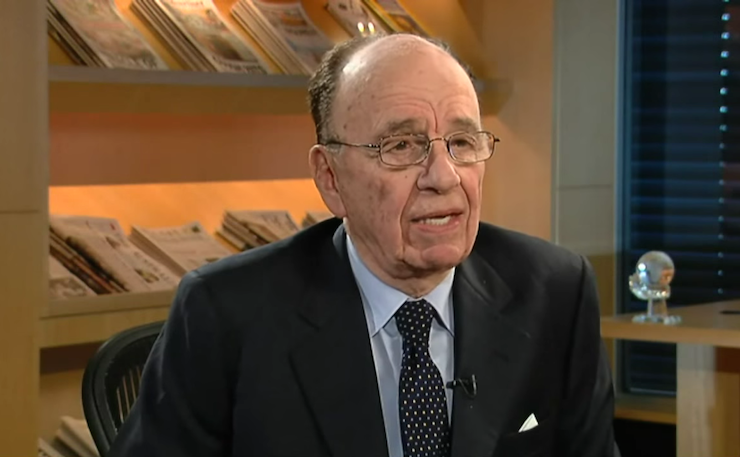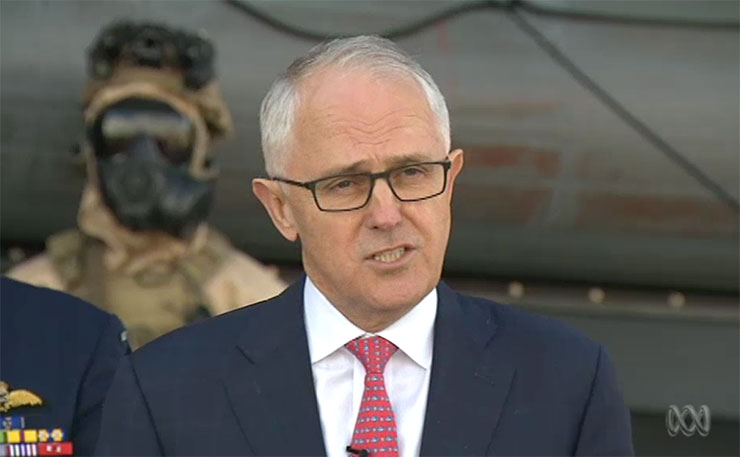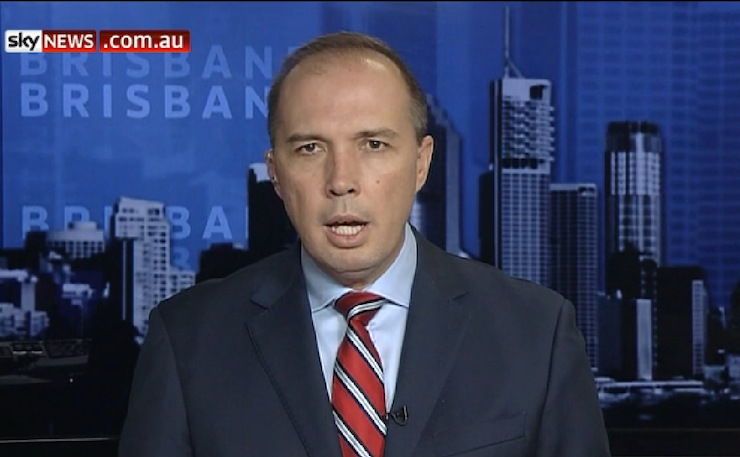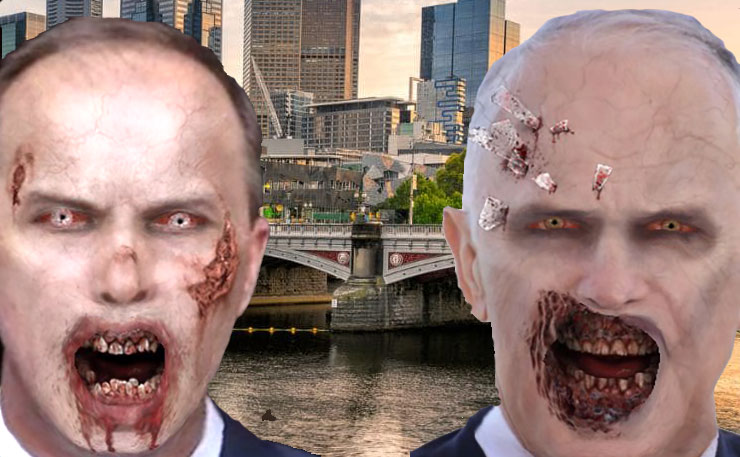The media driven, politically exploited furore over ‘African crime gangs’ leads Ben Debney to wonder out loud who Australians should really be scared of.
“The whole aim of practical politics,” wrote the famed US journalist H. L. Mencken in 1921, “is to keep the populace alarmed (and hence clamorous to be led to safety) by menacing it with an endless series of hobgoblins, all of them imaginary.”
Lacking both policies and the usual hobgoblins with which to menace the public as the war of terror has wound down and the boats have stopped, the federal Tories, long time stalwarts of this truism, have revealed their conspicuous illiberalism in the new year by launching a moral panic over African youth gangs in Melbourne.
The ball began rolling on this panic in the last few weeks of 2017, when News Corp ran a number of articles (‘Call for action against rioting African mob’; ‘Plea to Turnbull to smash the gangs’) engaging in what researchers into moral panics in sociology call the ‘production of deviance.’
‘Deviance’ in this sense refers to the result of having the power to interpret the meaning of words self-interestedly and impose those interpretations on public discourse, rather than characteristics of anyone so labelled. Every imaginary hobgoblin is, in one form or another, a deviant.

Few on the planet have greater power to produce deviance, and so to manufacture hysteria though moral panic, than the neo-feudal corporate aristocrat Rupert Murdoch. Malcolm Turnbull, knowing how quickly the same mechanisms can be used against him (and how much Murdoch hates him already, having ousted his favourite pet), fell sharply into line, alleging in his first press conference for the year “growing gang violence and lawlessness in Victoria”. In this moral panicking, he is thus merely on script in deference to those who wield true power in society.
Such violence, Turnbull claimed, was a failure of ‘political leadership’ and ‘determination’ on the part of the Andrews government – the underlying pretence being that he knows anything about either himself. The tendency to establish pretences is another aspect of moral panicking, that of crisis leveraging, and typically takes the form of ramming ideas down the throats of the public that corporate oligarchs and their parliamentary captures find it preferable for us all to believe (‘they hate our freedoms’ is another such example of crisis leverage).
This pretence might be considered particularly ironic considering Turnbull’s attempt to curry favour with the corporatocracy’s reigning opinionmaker. Nevertheless, such facts, along with the evidence that crime rates are falling, evidence of discrimination in policing, and evidence that such scare-mongering creates in fact the kinds of societal tensions it purports to respond to by demonising minorities, and in so doing alienating them, has largely been relegated to the memory hole in favour of media sensationalism over an ‘African gang crime wave’.
The basis of this purported ‘African gang crime wave’ has been a party in Werribee resulting in the trashing of an AirBNB, with ‘Apex’ gang graffiti left inside, a “huge gang of violent African teenagers running riot along St Kilda beach” according to the objective journalism of 7 News (who interviewed a white South African to explain what was wrong with the black people involved) and a number of other incidents, including the assault of a police officer at Highpoint and the damaging of a park at Tarneit.

Such is the depth of the moral pique that suddenly it’s acceptable to compare non-whites to animals, as in the days prior to 1967 when the Indigenous community was legally classed as part of the Flora and Fauna Act.
While these matters are certainly criminal, there is no reason to imagine they are unique to the population of African youths in Melbourne. As the Police Accountability Project points out:
- These incidents fit into a bigger story;
- Journalists tend to follow a script;
- The coverage of ethnicity is selective;
- We are in the midst of a moral panic;
- This sort of media coverage is harmful;
- Racialised perception of crime serves a purpose;
- There is no ‘African youth’ crime wave;
- ‘Over-representation’ is a data trick;
- There is no association between race and criminal behaviour; and finally,
- We are distracted from real solutions.
In other words:
1. The framing of minor incidents as a great conspiracy helps to sensationalise minor stories and speed up slow news days; ‘ It is no longer a crime story but a political story.’
2. Studies show repeatedly that crimes with a black suspect and white victim figure more prominently and use more emotive language (eg. thugs, predators), reflecting pressure ‘to confirm widely held stereotypes’ rather than facts.
3. Race was not at issue in media coverage of New Year’s brawls on Phillip Island or schoolies week on the Gold Coast, the riot of almost 5,000 white people protesting the cancellation of the EasterNats race meet at Melbourne’s Calder Park Raceway, or a ‘wild brawl’ which broke out at a Gippsland Bachelor and Spinsters Ball in Tooradin in November 2017.
4. The double standards give rise to moral panic.
5. Involving ‘misguided and inaccurate public associations between ethnicity and crime’ leading directly to discrimination, “including employment… and has well-established psychological harms and social exclusion impacts upon the community itself.” Nevertheless,
6. Ratcheting up fear of crime drives support for emotive, destructive and self-defeating form of politics that undermine sound criminal justice policy, but that allow more conservative parties to paint more progressive policies as ‘soft.’ In reality,
7. Overall criminal incidents recorded in Victoria are down 4.8%. Youth crime rates in Victoria have been slowly declining for more than a decade. The statistics merit quoting in detail:
• The proportion of incidents committed by alleged offenders under the age of 25 has fallen from half of all incidents recorded in 2007-2008 to 40% of all incidents in 2015-2016.
• The number of young people in detention on sentence is also down: sentences in Children’s Court halved since 2008–09 with only very small numbers receiving sentences of detention.
• Victoria has the lowest rate of children (10-17) under justice supervision on an average day in Australia.
• Evidence showed that migrant youth and newly arrived migrants are not involved in criminal activity with less than 10 per cent being overseas born offenders. The second-highest country, after Australia, of alleged offenders in Victoria is New Zealand (2.8 per cent of the total offenders), followed by India (1.5 per cent), Vietnam and Sudan (both 1.4 per cent).
• It is not apparently for nothing that Victorian police superintendent Therese Fitzgerald said prior to the end of 2017 that the purported issue stemmed from “youth crime in general”, adding further that there was “not a particular group of youths we are looking into”. Nevertheless,
8. The claim that current crime rates are being “driven by” any one group is an old data trick. Because it’s a newly arrived community, Sudanese young people are ‘over-represented’ within their own tiny demographic, and so in some crime types. But overall their offending remains less than 2% of the total. Furthermore,
9. The Australian Institute of Criminology and similar institutes around the world have consistently found that ethnicity or race have zero determination on the likelihood of being involved in crime. ‘Journalists in particular should be aware of this.’ Finally, the Police Accountability Project notes;
10. To be safest we need to invest in communities, “resourcing programs that tackle disadvantage and the causes of crime, as well as more drug and alcohol support or mental health services, youth workers and needs-based funding for early childhood services, family support and schools”. But while those charged with governing society and keeping us informed look to capitalise on fear and prejudice in service of their own vested interests “we remain distracted from all of this”.

Those who do seek to capitalise on fear and prejudice in service of their own vested interests try to maintain the pretence that this existentialist threat to society is new, unique and credible by shoving these many facts and considerations under the rug. In reality, they are reading from a very old script, one that has been the basis for any number of imaginary hobgoblins – in recent times terrorists, but also communists and witches, amongst others. In the 1950s, the Bodgies and Widgies were the imaginary hobgoblins of the day, before the Sharpies came along in the 1970s.
Fear of Asian immigration stirred up with the rise of Pauline Hanson gave way to panic over Lebanese gangs as the backdrop for the ugly mob dynamics of the Cronulla Riots of 2005, though the ethnicity of the thousands of white people involved in those was never at any point a source of convention for the mass media. No calls were made for crackdowns on whites wearing Australian flags while sporting Southern Cross tattoos and sinking tinnies (for her part, Hanson later decided Asians were okay, as the fashion in imaginary hobgoblins had changed while she was away).
So prevalent in fact have been media-fuelled moral panics that they even formed the basis for the seminal study into moral panics by Stanley Cohen (Folk Devils and Moral Panics) – in this case, over ‘youth disturbances’ at seaside holiday villages in the south of England between rival youth subcultures. Yet another media-driven moral panic over ‘muggings’ by youth gangs was the subject of another major study lead by famed sociologist Stuart Hall not very long afterwards (Policing the Crisis).
Cohen and Hall both found that moral panics fuelled by the mass media provided a suitable pretext for policy measures that would have been considered intolerable where elevated emotions were not hijacking reason. In so doing, the ‘moral entrepreneurs’ of deviance production tended mysteriously to transform themselves into most or all that they claimed to oppose.
That one pesky detail of that order notwithstanding however, they pursued them nonetheless, due apparently to their great serviceability to the sectional interests of the transnational corporate aristocracy.
Such would appear to go some way towards accounting for the 4 January comments of Home Minister Peter Dutton, who alleged in an interview with 2GB in Sydney that “people are scared to go out to restaurants of a night time because they are followed home by these gangs” and “were worried about home invasions and cars being stolen”. Dutton neither stated who he was talking about, nor provided any evidence to support such outrageous claims, though to the logic of deviance production none was required — merely the power to demonise convenient scapegoats.

For this specific reason, Dutton failed to clarify whether people being scared were reflected in his comments, or were an effect of them.
Nevertheless, according to Dutton’s version of events, the Victorian Police have been “wrapped up in this politically correct conversation”, such that they are getting a ‘go soft’ message from the Victorian state government, which has appointed “civil libertarians to the judiciary”. Such comments are in keeping with the production of imaginary hobgoblins.
To associate facts such as those outlined by the Police Accountability Project with thought policing is natural for those who refuse to make any distinction between being criticised and being attacked, and demonstrates the utility of paranoid conspiracy theories to those unwilling to reflect on their own conduct, policies and value systems, or lack thereof.
This latest episode of scare-mongering from News Ltd, Turnbull and Dutton comes not very surprisingly with a state government election in the offing later in 2018. As such it follows a pattern of moral panicking within the context of election campaigns that can be traced back through the War on Terror, Tampa, stopping the boats and the dangling of innumerable other imaginary hobgoblins in front of the public. A critic might argue that the only lawless gang threatening Australia is the one running it.
With no policies other than continuing to service the opulent through neoliberal austerity and a litany of actual problems they have no capacity or willingness to deal with – from homelessness and housing unaffordability to the domestic violence epidemic and climate change – the value of fear and prejudice as a distracting, scapegoating and crisis leveraging mechanism would appear to account for why the corporatocracy and its loyal servants in federal parliament are not wont to let facts get in the way of a good story.
PLEASE CONSIDER SHARING THIS STORY ON SOCIAL MEDIA: New Matilda is a small independent Australian media outlet. You can support our work by subscribing for as little as $6 per month here.
Donate To New Matilda
New Matilda is a small, independent media outlet. We survive through reader contributions, and never losing a lawsuit. If you got something from this article, giving something back helps us to continue speaking truth to power. Every little bit counts.




